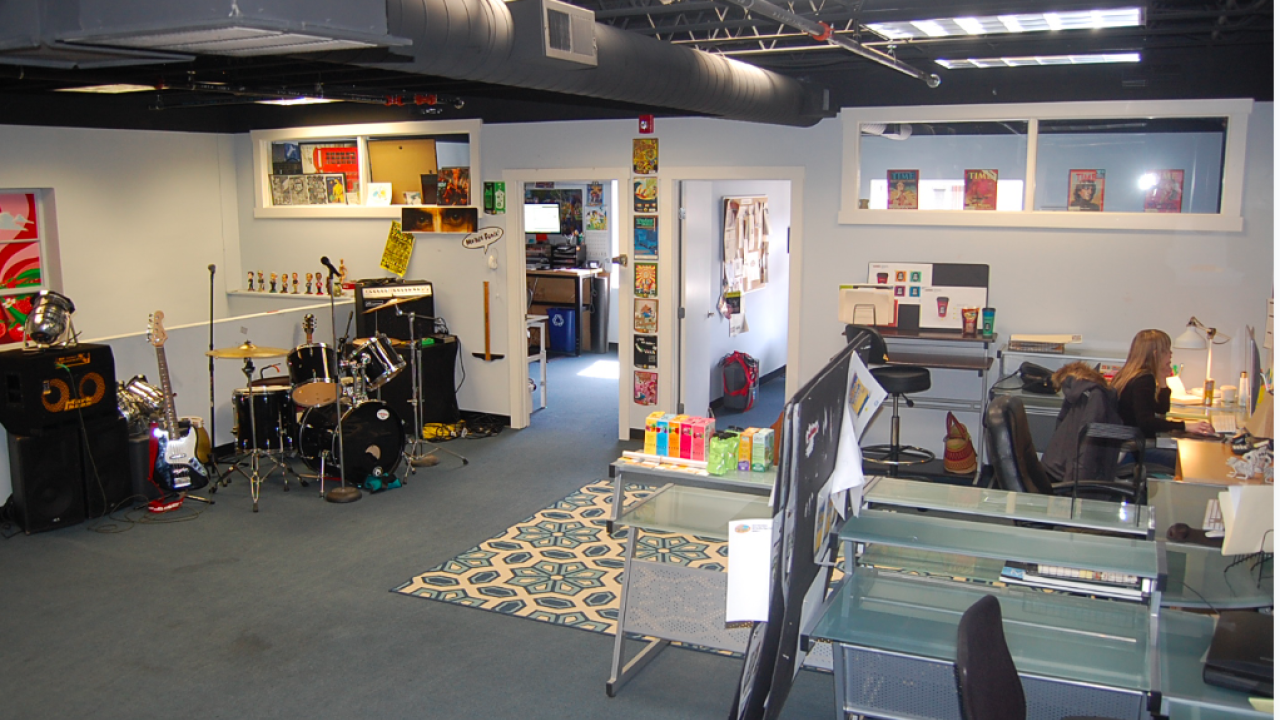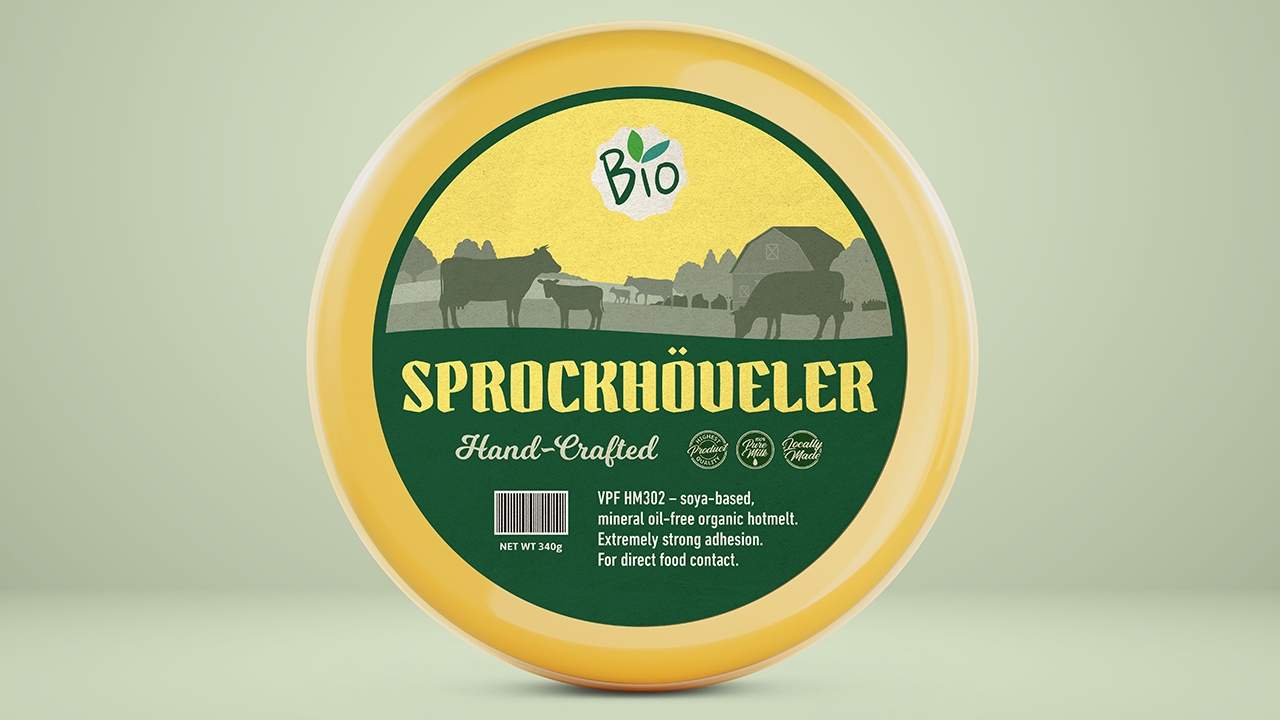Q&A: Patrick Mallek

Labels & Labeling: Tell us about yourself and your company.
Patrick Mellak: Pull up a chair! I started Mighty Fudge Studios in 1999 primarily as an animation studio. In 2008, my wife Kimberly came on board full time (from in-house CPG and grocery) and brought in the packaging creative. We’ve got a small shop in downtown Boulder, Colorado, with a few employees, a couple of dogs and a six-year-old daughter running around here somewhere.
L&L: What markets do you serve?
PM: We are a full-service creative studio, but we specialize in food packaging and creative services supporting those customers – branding, copywriting, illustration, animation, motion graphics, UI, and of course augmented reality. We’re in Boulder, Colorado, the heart of the natural food industry. Our clients are local and national. Over the years we’ve done private label creative for retailers like Walmart, Wild Oats and Harmons Grocery and branding, design and animation for CPG companies like GoGo SqueeZ and Earth Balance.
L&L: What’s the story behind your company name?
PM: Ha! Mighty Fudge is a more socially acceptable way to say a popular profane idiom. It worked well in Hollywood and the film and animation industry, but not so much in the food packaging space. We invented The Brand Chefs in 2011 as a marketing device to help alleviate our awkward elevator pitch. Not because the name was dirty, no one seemed to care about that, but because people thought we made actual fudge. We still use the Mighty Fudge Studios name for animation and augmented reality and other subversive endeavors [laughs].
L&L: What is your company’s value proposition?
PM: High-level concept creative. We take our creative very seriously and work best with courageous clients who aren’t afraid to go all-in on their branding, design and viral content. In our opinion, half-baked creative is inherently doomed to fail.
L&L: How do you define augmented reality?
PM: The goal of augmented reality is to make your world a more magical and functional place. The difference between augmented and virtual reality is that with VR, you are immersed into an entirely virtual experience. With AR, you still see the world around you, but you can see things that aren’t really there (or at least they are not ‘really there’ by our current concepts of reality.) The opportunities are endless.
L&L: What is the current state of the AR industry?
PM: The augmented reality revolution is incipient. Investment money is pouring into the hardware side of the industry, with creative soon to follow. Coming advancements such as AR wearables, 5G and blockchain cloud technology coupled with younger consumers’ expectations of how technology integrates into their world will vault augmented reality into the mainstream.
L&L: How has AR changed over the years?
PM: Augmented reality has gone from novelty to need. When we first saw it, it was webcam-based and not very convenient to use. When it went mobile, we saw value. Pokémon Go was the first shot across the bow, and now that Apple and Google have integrated it into their developer tool kits, it’s officially here. The next generation of technology is being developed for specific applications, not just to see if it works.
I guess the big takeaway is that augmented reality is much more than people wandering into traffic chasing Pokémon or gaudy gimmicks on Snapchat. It’s a powerful but still emerging technology that will change the way we live, work and play in the very near future.
L&L: What are the biggest growth markets for AR?
PM: That depends on who adopts the technology first. The possibilities are virtually endless, but I expect a lot more failures than successes early on. Right now it looks like gaming and social media will be the first growth markets. Entertainment will probably adopt quickly as well. But the end game will be functional AR, or augmented reality that improves functionality in your daily life. In 10 years, AR will have changed the way we interact with the world around us, from communication to shopping to travel to the way we are entertained and beyond.
L&L: What are the latest trends in AR?
PM: It’s almost too early to tell. Developers everywhere are exploring every conceivable purpose. Gaming is the backbone, but that’s because its success has been quantified (by Pokémon Go). The next big trend will be functional AR, but that won’t happen until the hardware takes the next big leap, which is coming soon. The main thing I’ve learned about pitching and selling AR is that once people grasp the concept, the ideas come pouring out from every direction. It’s the most limitless technology since smartphones, maybe more so.
L&L: How can brands implement an AR strategy on labels and packaging? Why should they?
PM: Right now brands would need to either have a proprietary app or use one of the aggregated AR services. The pros to having their own app are apparent – exclusive branding, data collection, contained ecosystem – but it requires the initial investment of creating, deploying and servicing the app. An aggregated service reduces the costs, but limits the creative and functionality and doesn’t provide nearly the level brand support since you’re lumped in with other companies. Either way, marketing support will be critical to the success of any AR deployment.
Now the ‘why’. There really is no one single reason, it’s more brand specific and needs to align with their current marketing strategy. That’s an important point. If the AR seems foreign or awkward when compared to their familiar messaging, it will fail like any other ill-conceived marketing device. For brands that promote transparency, augmented reality can be a magic window into ingredient sourcing and manufacturing process and alert consumers to dietary specific concerns. If your brand is based in altruism, AR can connect and drive social media with objective-based social gaming. Fun and funky brands can engage with their customers outside the store with custom content unlocks and back-of-pack gaming – imagine a cereal box with an AR game on the back instead of tic-tac-toe. If your brand is into sustainability, AR can unlock multiple branding and communication features from a simple sticker on a recycled craft paper package. Foodie brands can have celebrity chef recipe demos on-pack right in the customer’s kitchen. For retailers, AR can also unlock all the features available to online shoppers to customers in their brick and mortar stores, combining the power of Amazon with the personal touch of traditional retail.
L&L: What are the challenges with AR?
PM: Number one is ‘what is augmented reality?’ Beyond that the main hurdle is marketing – it’s not expected at this stage, so getting consumers to download your app is key. Use AR for promotions. Brands that incentivize downloading the app and using AR will be the most successful.
L&L: What can label and packaging suppliers do to increase adoption?
PM: I think educating the client is the most important thing right now. There are so many mysteries surrounding AR at this stage: What is it? Do I need some kind of special printing? How do I get an app? Until it’s an expected feature, the buy-in will be limited to brands willing to take the chance, which can be a great PR opportunity. The main thing is to use AR to solve their problems. With AR, a small package can contain a limitless amount of branding and features. It’s like a QR code without the ugly QR code. AR can give you a great talking point in a crowded market space.
L&L: What do label and packaging suppliers need to know about AR?
PM: The biggest question is usually about the printing. There is nothing proprietary about the printing or image. AR uses image recognition technology to scan for triggers, so almost any package is already AR compatible. There are certainly considerations, but your AR provider should be able to help you navigate them.
L&L: What advice would you give to suppliers considering testing an augmented reality strategy?
PM: My best advice is to work with an experienced AR team who knows what they are doing. This is new technology, so make sure you are not the guinea pig for someone’s AR development team. We know from experience that a bad AR deployment can quickly come back to bite you. Social media can be a double-edged sword.
Stay up to date
Subscribe to the free Label News newsletter and receive the latest content every week. We'll never share your email address.


